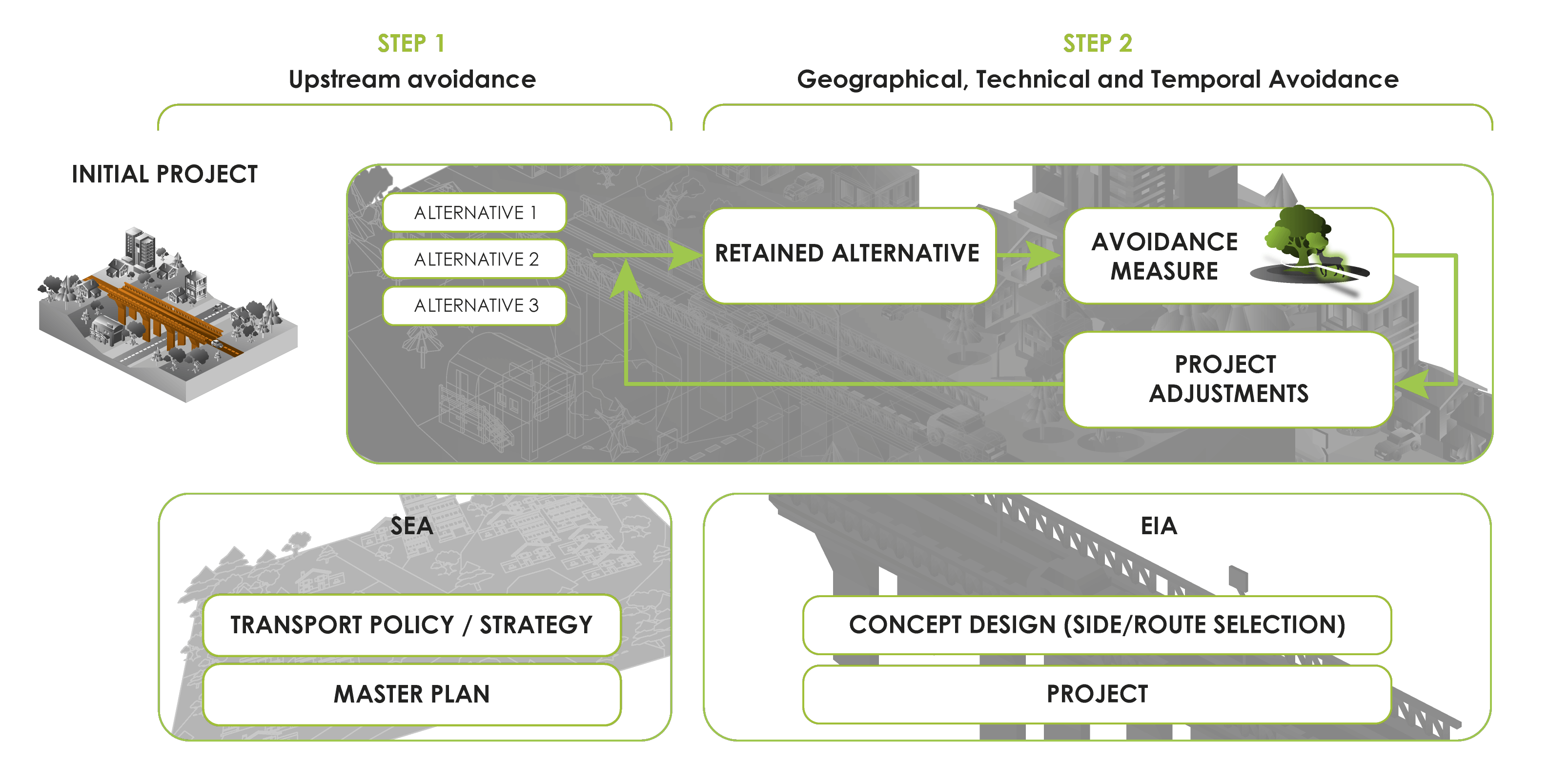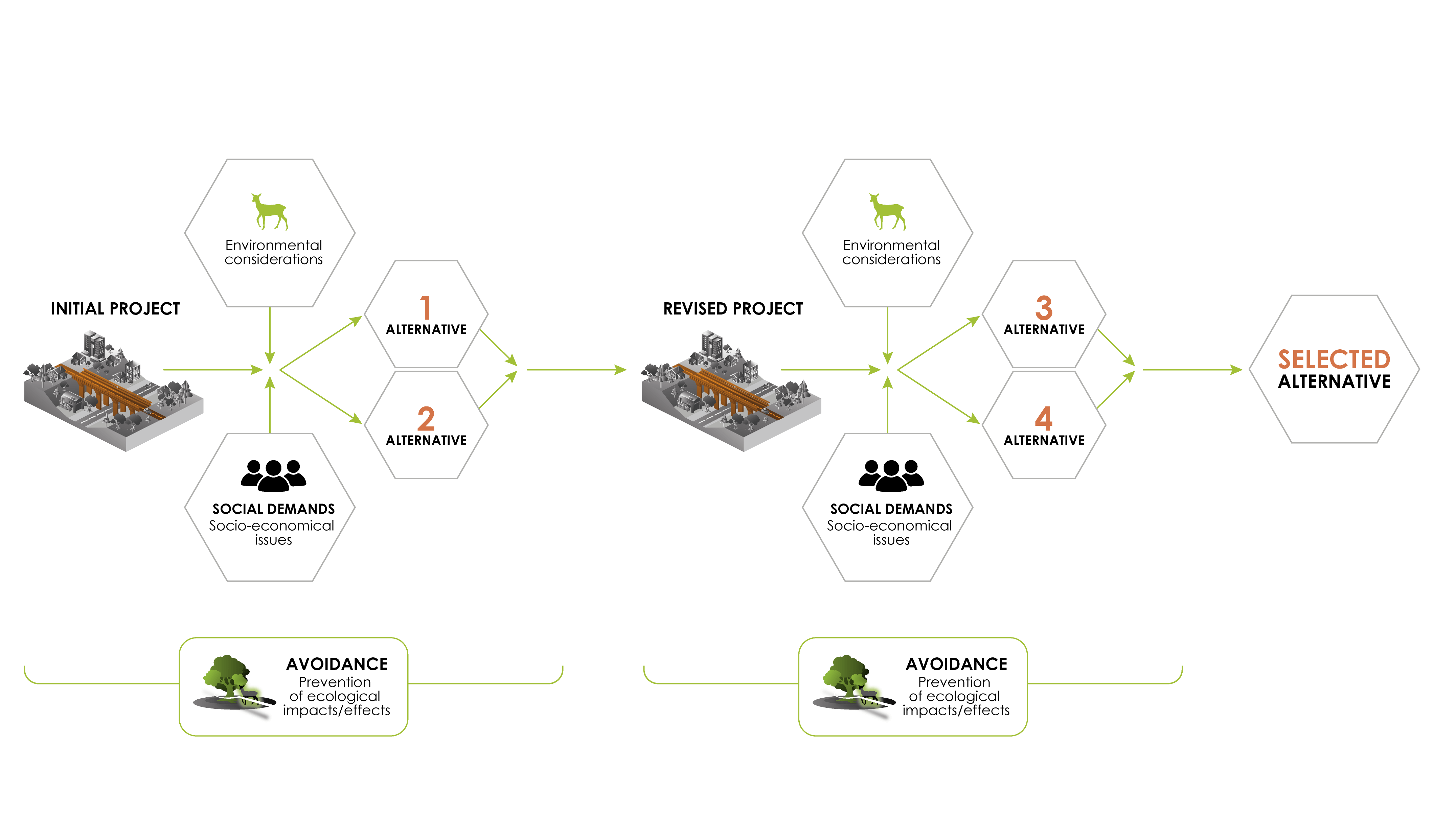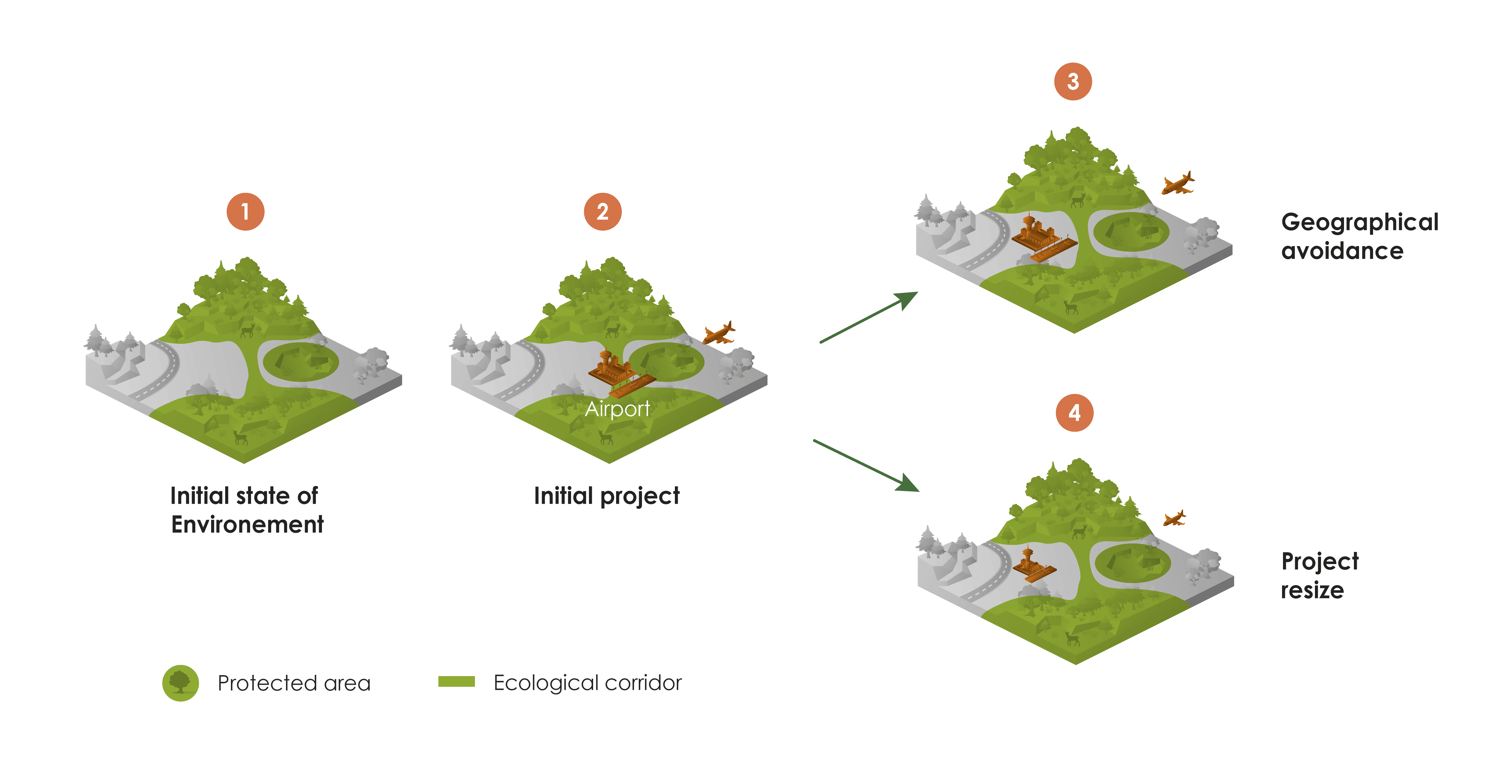There are four key types of avoidance measures that can be implemented at different stages of the project conception (Figure 3.2.2): i) upstream avoidance, ii) geographical avoidance, iii) technical avoidance, and iv) temporal avoidance. These measures are not independent from each other and should be designed iteratively, identifying potential synergies amongst them.

Upstream avoidance: ‘to do or not to do’ or ‘to do less’
Upstream avoidance occurs in the early phase of the project when implementation choices have yet to be made. Stakeholders should adapt both to the evolving mobility requirements and changes to national transport policies throughout the decision-making process and therefore consider different options or scenarios of development and its implications.
Upstream avoidance approaches consist of three steps (Figure 3.2.3):
- Deciding whether or not to undertake a project (‘doing or not doing’).
- Assessing the project´s relevance as accurately as possible to verify that the project is aligned with the actual social, economic, and environmental needs.
- Proposing and comparing infrastructure design scenarios (alternatives), and to select the one which will avoid the greatest number of environmental impacts (‘doing less’).
Upstream avoidance may result in the abandonment of a project or the choice of another type of project.

Geographical avoidance: ‘do less’ or ‘elsewhere’
Geographical avoidance involves changing the project’s location (Figure 3.2.4). The right-of-way and routes can be completely revised (‘do elsewhere’) or marginally revised (‘do less’) depending on the environmental issues identified. The main issue is geographical avoidance on a fine, spatial scale. While little room for manoeuvre may exist at this stage, a series of measures can be defined to eliminate negative impacts at a very local project scale, such as the immediate project location or neighbouring plots. The overall aim is to identify all possible geographical avoidance measures at a fine scale.
Technical avoidance (‘do differently’)
Technical avoidance is based on choices made relative to the project development or to the construction methods. This includes changing the project´s shape (Figure 3.2.4), the materials used, and/or adapting the technical implementation to avoid impacts on biodiversity. For instance, the decision to not use an herbicide in a project can be a measure classified as technical avoidance. The application of technical avoidance should result in the identification of the lowest impact project.
Temporal avoidance: ‘do it at another time’
Temporal avoidance consists in modifying planned operations in a project to implement temporary, intermittent avoidance measures at sensitive and very specific times of the year. While appearing more like a reduction measure (because the impact is not removed), temporal avoidance can fit under the definition of avoidance for very limited circumstances, specifically when they prevent an impact. This type of avoidance can be implemented by adapting the work schedule to avoid operating in periods when species are most sensitive, such as breeding seasons or when sensitive migratory species are likely to be present or passing through the area of influence of the project.
